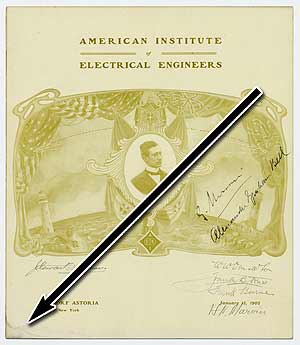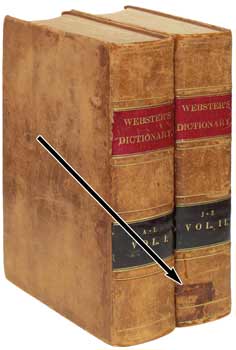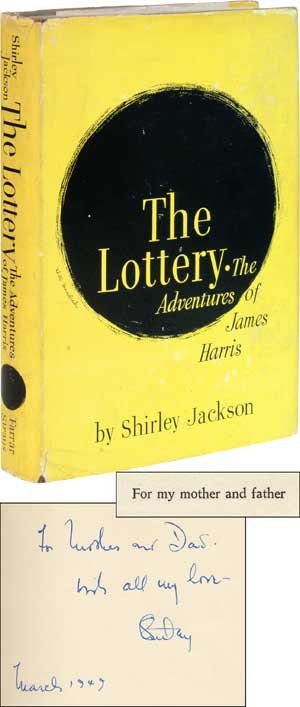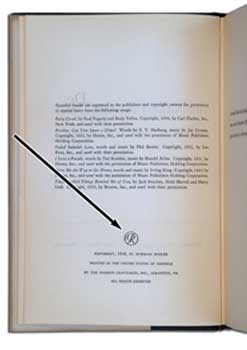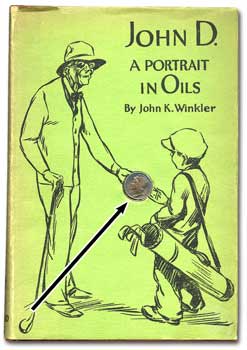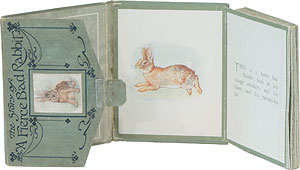
Glossary
What book dealers really mean. Click on thumbnails for larger images.
Dampstaining
A stain caused by the presence of water. Although in some circles dampstain is two words, it's only one flaw so we see no reason to punish ourselves. This menu from a banquet held for scientists at the turn of the last century, offered in our Catalog 105, was dampstained at the bottom corner, but it was also signed by Alexander Graham Bell and Guglielmo Marconi, so we didn't mind too much.
Darkening
When something is darker than it started out, usually caused by soiling, smoke, dirt, sunspots, or improper medication. The bottom of the spine on the second volume of this first edition of Noah Webster's dictionary, in contemporary binding and offered in our Catalog 102 has a little darkening. See? It may seem to you that defining terms such as "darkening" is ridiculous. "Darkening" means "darkening"! But if we had a nickel for every time someone has asked us, "What do you mean by darkening?" we'd be on our merry way to the dollar store close-out sale this very minute. So here you are - this is what we mean by "darkening."
Dedication Copy
A copy of a book that has been personally presented or inscribed to the person to whom it was dedicated in print, usually on the "dedication page." This is usually the best possible association for this specific book - shown here is the Dedication Copy of Shirley Jackson's The Lottery, which we offered in 2005.
Device
Sometimes called the colophon (which is confusing since this term has an alternate meaning). Referring to the publisher's logo used on the copyright page, especially when it is used to denote a first edition, as it occasionally did for some publishers in the 20th Century (Farrar and Rinehart, Charles Scribner's Sons, G.P. Putnam's Sons, and others). For example, copies of Norman Mailer's first book, The Naked and the Dead, must have the publisher's device on the copyright page, as shown here for this copy from our Catalog 125, in order to be a first edition.
Die cut
A mechanical process for cutting shapes out of paper, allowing publishers to put "windows" into their jackets. One of our favorite die-cut jackets is for John Winkler's curious 1929 book about John D. Rockefeller, John D.: A Portrait in Oils, which had a Mercury dime inset into the front board and the jacket die-cut for the dime to show through. On most copies the dime has long fallen prey to penurious booksellers. But not us - we just make sure to charge an extra ten cents when you buy it.
DNB
The Dictionary of National Biography, a standard reference of notable figures in British history, originally published in 1885.
Duodecimo
Often abbreviated as 12mo. This doesn't mean "a dozen more," but in the book world describes a small book (a little smaller than a mass market paperback), whose printed paper sheets were folded in such a fashion as to make twelve leaves (24 little pages) from one large sheet. And yes, it is sometimes pronounced "twelve-mo." Beatrix Potter's famous Peter Rabbit books, such as this nice example from our Catalog 84, were printed as 12mo's.

